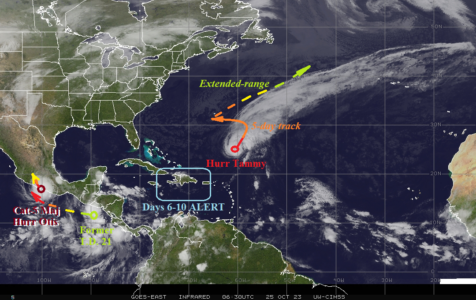10/25/2023, 5:22 am EDT
Overnight “Otis” intensified rapidly to become a category-5 major hurricane just before striking Acapulco on the south coast of Mexico this morning. Former Tropical Depression 21 has crossed Central America and entered the East Pacific and is likely to drift west-northwest and become another hurricane. Hurricane Tammy is forecast to turn northwest and west while transitioning into a powerful extratropical cyclone. An ALERT is issued for the North-central Caribbean Sea for a possible tropical cyclone emerging next week.
![Climate-Impact-Company-logo-sm[1]](https://climateimpactcompany.com/wp-content/uploads/2023/08/Climate-Impact-Company-logo-sm1.png)



